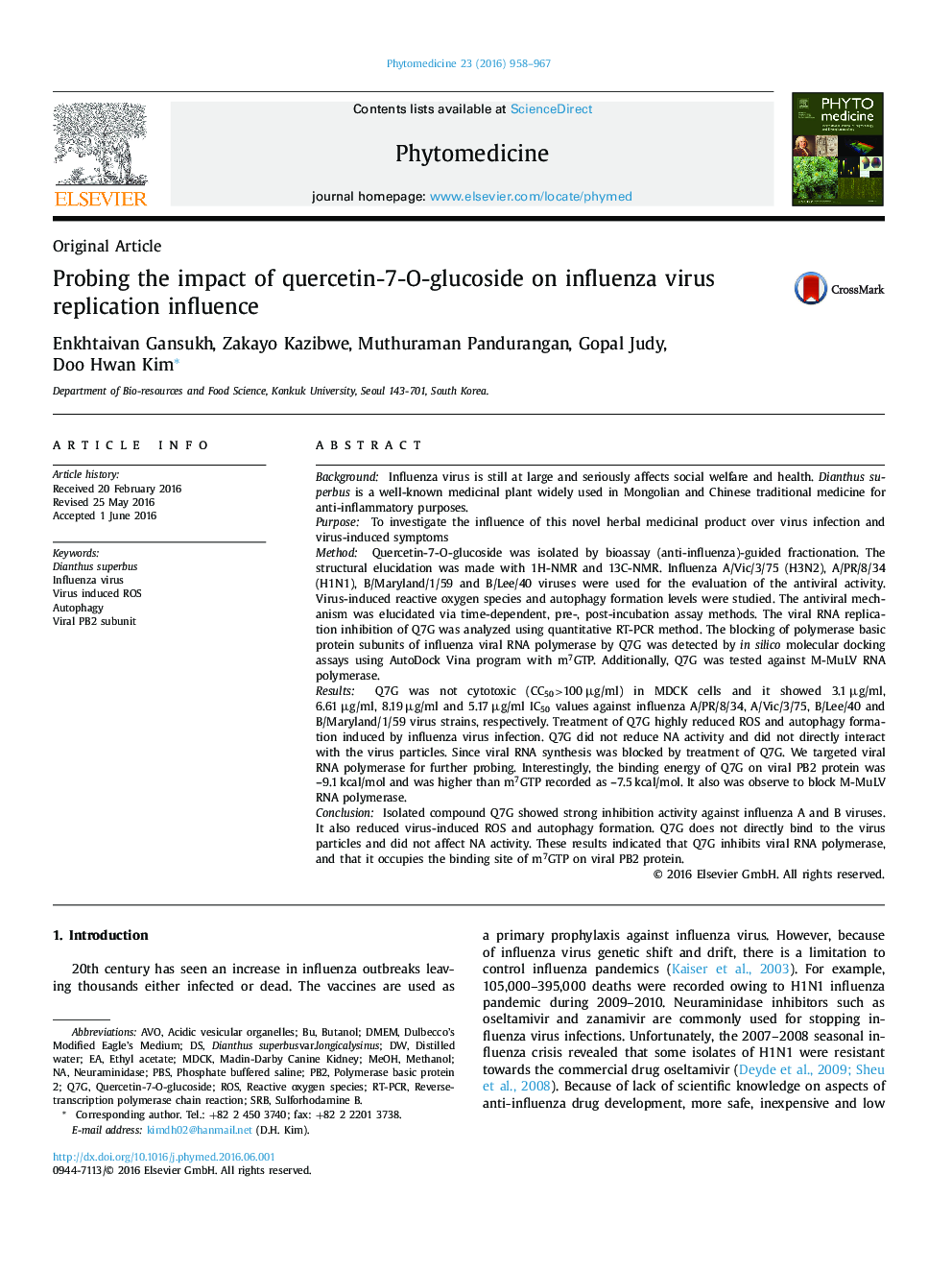| کد مقاله | کد نشریه | سال انتشار | مقاله انگلیسی | نسخه تمام متن |
|---|---|---|---|---|
| 2496222 | 1116114 | 2016 | 10 صفحه PDF | دانلود رایگان |

BackgroundInfluenza virus is still at large and seriously affects social welfare and health. Dianthus superbus is a well-known medicinal plant widely used in Mongolian and Chinese traditional medicine for anti-inflammatory purposes.PurposeTo investigate the influence of this novel herbal medicinal product over virus infection and virus-induced symptomsMethodQuercetin-7-O-glucoside was isolated by bioassay (anti-influenza)-guided fractionation. The structural elucidation was made with 1H-NMR and 13C-NMR. Influenza A/Vic/3/75 (H3N2), A/PR/8/34 (H1N1), B/Maryland/1/59 and B/Lee/40 viruses were used for the evaluation of the antiviral activity. Virus-induced reactive oxygen species and autophagy formation levels were studied. The antiviral mechanism was elucidated via time-dependent, pre-, post-incubation assay methods. The viral RNA replication inhibition of Q7G was analyzed using quantitative RT-PCR method. The blocking of polymerase basic protein subunits of influenza viral RNA polymerase by Q7G was detected by in silico molecular docking assays using AutoDock Vina program with m7GTP. Additionally, Q7G was tested against M-MuLV RNA polymerase.ResultsQ7G was not cytotoxic (CC50>100 µg/ml) in MDCK cells and it showed 3.1 µg/ml, 6.61 µg/ml, 8.19 µg/ml and 5.17 µg/ml IC50 values against influenza A/PR/8/34, A/Vic/3/75, B/Lee/40 and B/Maryland/1/59 virus strains, respectively. Treatment of Q7G highly reduced ROS and autophagy formation induced by influenza virus infection. Q7G did not reduce NA activity and did not directly interact with the virus particles. Since viral RNA synthesis was blocked by treatment of Q7G. We targeted viral RNA polymerase for further probing. Interestingly, the binding energy of Q7G on viral PB2 protein was –9.1 kcal/mol and was higher than m7GTP recorded as –7.5 kcal/mol. It also was observe to block M-MuLV RNA polymerase.ConclusionIsolated compound Q7G showed strong inhibition activity against influenza A and B viruses. It also reduced virus-induced ROS and autophagy formation. Q7G does not directly bind to the virus particles and did not affect NA activity. These results indicated that Q7G inhibits viral RNA polymerase, and that it occupies the binding site of m7GTP on viral PB2 protein.
Figure optionsDownload high-quality image (369 K)Download as PowerPoint slide
Journal: Phytomedicine - Volume 23, Issue 9, 15 August 2016, Pages 958–967